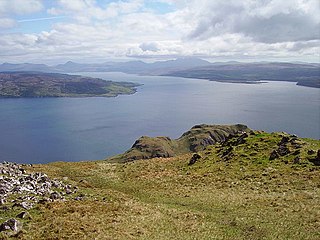Vinga could refer to:
- Vinga, Arad, a commune in Arad County, Romania
- Vinga (Gothenburg), an island near Gothenburg, Sweden
- Vinga Lighthouse, a lighthouse on the island
- Susana Vinga, academic at the University of Lisbon
Vinga could refer to:

Öckerö Municipality is a municipality in Västra Götaland County in western Sweden. Its seat is located in the town of Öckerö on the main island, which is also called Öckerö.
Arad or ARAD may refer to:

Arad County is an administrative division (județ) of Romania roughly translated into county in the western part of the country on the border with Hungary, mostly in the region of Crișana and few villages in Banat. The administrative center of the county lies in the city of Arad. The Arad County is part of the Danube–Criș–Mureș–Tisa Euroregion.

Axel Evert Taube was a Swedish author, artist, composer and singer. He is widely regarded as one of Sweden's most respected musicians and the foremost troubadour of the Swedish ballad tradition in the 20th century.

Styrsö is a small island and a locality situated in Göteborg Municipality, Västra Götaland County, Sweden. It had 1,304 inhabitants in 2010.

Vinga is a commune in Arad County, western Romania, south of the county seat of Arad, with a population of 5,828 inhabitants. Vinga is located in the northern section of the Banat. The people in Vinga are mainly Romanians, the second largest ethnic group being Hungarians. There is a Bulgarian minority of Catholic faith, known as the Banat Bulgarians, who have historically been the dominant ethnicity in Vinga.

Vinga is a small island 10 nautical miles outside Gothenburg's harbour entrance in Sweden. The 19th century Vinga Lighthouse is noted, not only as a beacon in the waterway of the Swedish west coast, but also as the place where the Swedish poet laureate Evert Taube grew up. Today Vinga is a tourist attraction, with boats to and from Gothenburg harbour.

Stefan Dunjov was a Banat Bulgarian military figure and revolutionary known for participating in both the Hungarian Revolution of 1848 and the Italian unification (Risorgimento), as well as for being the first ethnic Bulgarian Colonel.
Petru Stoianov is a Romanian composer.

Långe Jan is a Swedish lighthouse located at the south cape of Öland in the Baltic Sea, Sweden's second largest island. It is one of Sweden's most famous lighthouses along with Kullen, Vinga and Landsort, and also the tallest lighthouse in Sweden.
Frumușeni is a commune in Arad County, Romania. It lies in the north-eastern part of the Vinga Plateau. It is composed of two villages, Aluniș and Frumușeni. These were part of Fântânele Commune until 2004, when they were split off.

Zădăreni is a commune in Arad County, Romania, is situated in the northern part of the Vinga Plateau, along the Mureș valley. Its territory occupies 2145 hectares. It is composed of two villages: Bodrogu Nou (Újbodrog) and Zădăreni. These were part of Felnac Commune until 2004, when they were split off.

Zăbrani is a commune in Arad County, Romania. It is situated in the eastern part of the Vinga Plateau, in its contact zone with the Lipova Hills. Its administrative territory stretches over 11,778 hectares. It is composed of three villages: Chesinț (Lippakeszi), Neudorf (Temesújfalu) and Zăbrani.

Vinga Lighthouse, is a Swedish lighthouse on Vinga island. The present-day lighthouse was built in 1890, although Vinga has been a significant island for mariners long before that. This lighthouse is the third built on the island. It is one of Sweden's most noted lighthouses and a special symbol for the city of Gothenburg.

Eilean Trodday is an island in The Minch just off the north coast of the Trotternish peninsula of Skye in Scotland.

The Sound of Mull is a sound between the Inner Hebridean island of Mull and mainland Scotland. It forms part of the Atlantic Ocean.

Timiș-Torontal was a county in the Kingdom of Romania. Its capital was Timișoara. The territory of the county had been transferred to Romania in 1920 from the Kingdom of Hungary under the Treaty of Trianon.

Karin Parrow née Taube (1900–1984) was an Expressionist painter from Sweden who belonged to a group known as the Gothenburg Colourists. After attending an art school in Paris, in 1926 she studied under Tor Bjurström at the Valand Art School in Gothenburg. A frequent exhibitor during her lifetime, her works are now in the collections of Nationalmuseet, Stockholm's Moderna Museet and the Gothenburg Museum of Art.

Melody of the Sea is a 1934 Swedish drama film directed by John W. Brunius and starring Carl Ström, Greta Almroth and Sigge Fürst. Prince Vilhelm of Sweden co-directed the film. It was shot at the Sundbyberg Studios of Europa Film in Stockholm and on location around Gothenburg and Grisslehamn. It revolves around the few people on the island, including those living in its lighthouse.